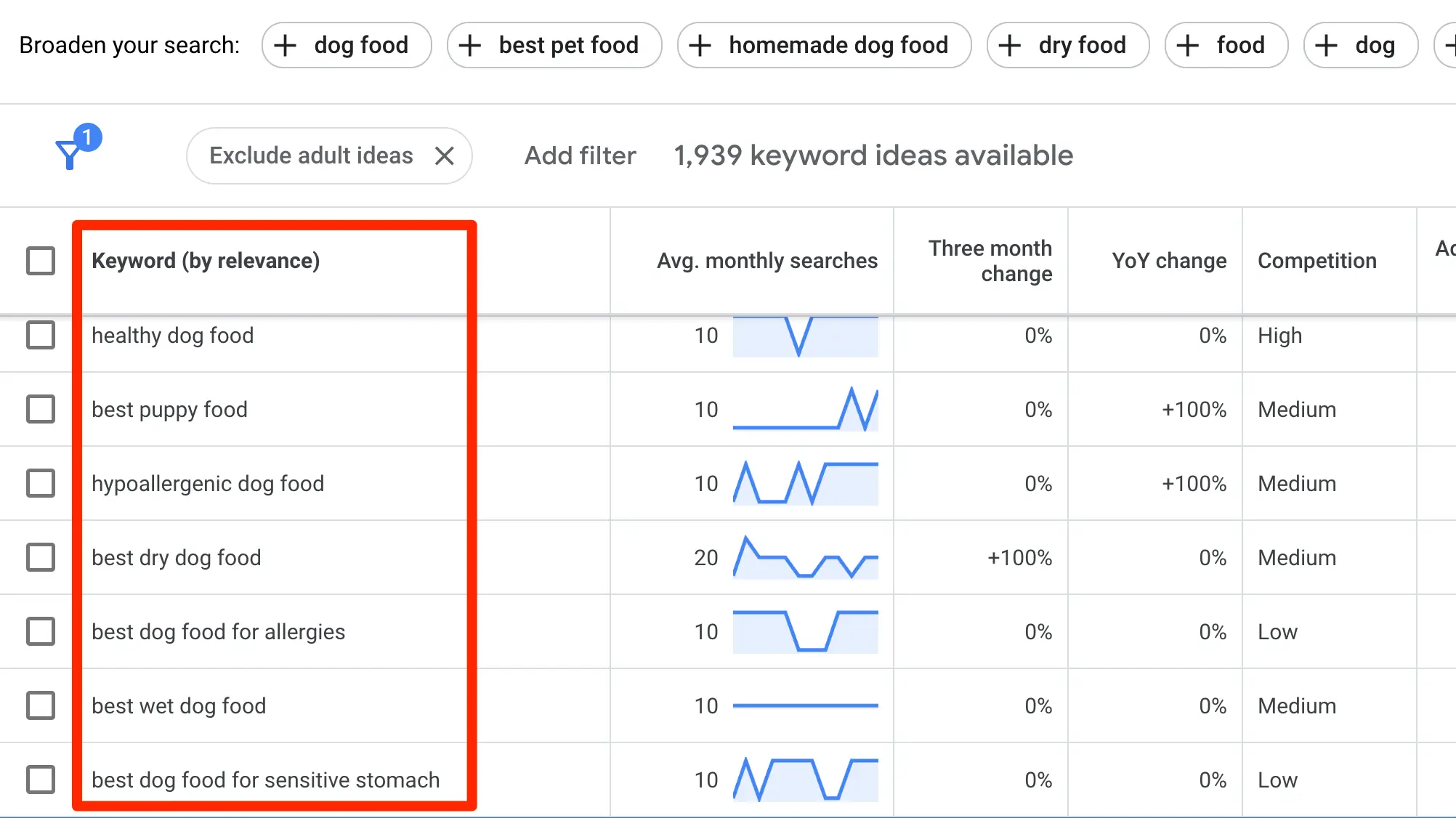What Are Long Tail Keywords?
Long tail keywords are search queries that are longer and more specific than commonly used keywords. They usually contain three or more words that produce more specific results. Long tail keywords have a higher conversion rate but relatively low search volumes and less competition.
They are called "long-tail" because if you plot all the keyword searches on a search demand curve, these would appear at the "long tail" end of the graph, representing less common, more niche search terms.
For example, look at the search demand curve below. Long-tail keywords have low monthly search volume, but when combined, they represent billions of searches per month.
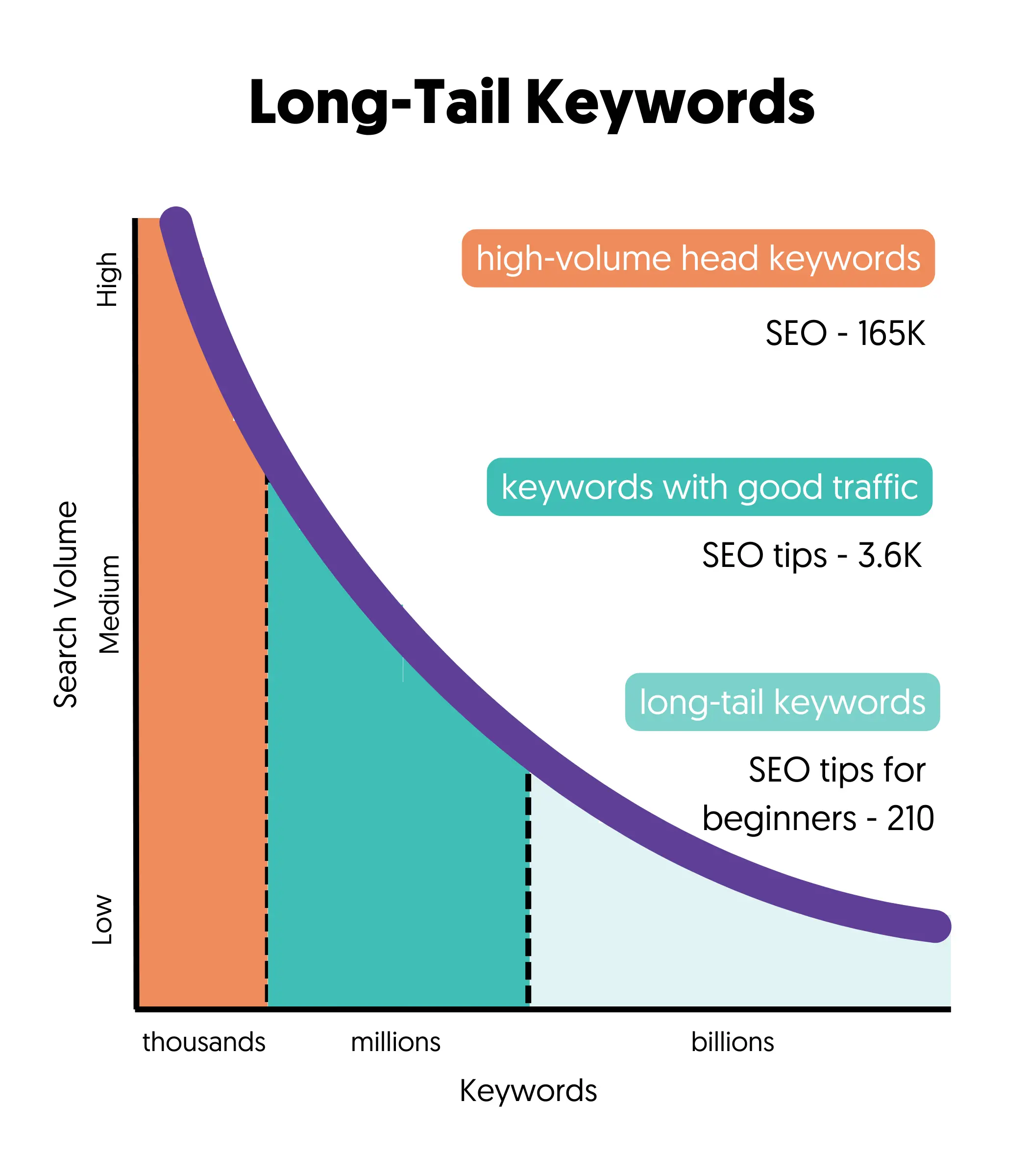
Long Tail Keywords Examples
Here are some examples of long-tail keywords to help you understand the concept better. The first column shows very competitive head keywords, and the second column shows long-tail, less competitive keywords but with a very specific intent.
Notice that the long-tail variations include the head keyword and are longer in length.
| Head Keyword | Long-Tail Keywords |
|---|---|
| Adidas | Adidas running shoes for women Adidas Yeezy sneakers limited edition Adidas track pants for men sale |
| SEO | SEO strategies for small businesses SEO tips for beginners advanced SEO techniques |
| Dog Food | organic grain-free dog food best dog food for senior small breeds dog food for weight management |
| Laptops | ultralight laptops for business travel best gaming laptops under $1500 laptops with long battery life for students |
Here is another example. Let’s take the keyword “SEO”.
This is a very popular keyword, and according to Semrush, it has more than 165,000 exact keyword searches per month. It is also a highly competitive keyword with an average CPC of 14.82 USD.
If you search for this term on Google.com, you will find websites like Wikipedia.org, moz.com, and Google websites in the first positions, making it almost impossible to outrank them with a normal website or blog.
So, if it is impossible to rank for “SEO” what is the next step?
You go one step further by adding tails or tails to the existing keyword to narrow your competition.
If you add the word ‘tips’ your keyword now becomes “SEO tips”, which is less competitive than the head keyword (SEO), but it is still very difficult to target.
The top results are dominated by large and well-known websites.
So, what do you do?
Add another word, and it becomes “SEO tips for beginners”.
Certainly, the number of people searching for this keyword per month is less compared to “SEO” and “SEO tips,” but the benefits gained from ranking long tail keywords are much more than the traffic difference.
Benefits of Targeting Long-Tail Keywords
Long-tail keywords are important because they allow you to target niche demographics. These keywords have less competition and a higher conversion rate than head keywords.
Other benefits of using long-tail keywords in your SEO strategy include the following:
Long-tail keywords match the user's intent - To understand the benefits of long-tail keywords, you need to understand the concept of intent. Put yourself in the searcher's shoes momentarily while you think about the customer journey.
A section of it might look something like this:
- The prospect becomes aware of their need and searches head keywords to find out more.
- The prospect becomes aware of a potential solution and searches a long-tail keyword with the intent to buy it.
This is a simplified explanation but nicely sums up the idea of intent.
For example, someone looking for ‘SEO’ is probably looking for a broad definition, while someone looking for ‘SEO Services’ intends to buy services from a provider.
For this reason, it's worth targeting long-tail keywords because the traffic that they bring in is targeted and will be far more likely to convert. The searchers are no longer in the 'discovery' mindset. They're ready to move into buying mode, and even though the volume won't be as high, it's well worth it.
Long tail keywords are easier to rank than non-long tail keywords - Provided you have a high-quality website, long tail keywords are easier to rank, especially if you choose low-competition keywords.
There are more long tail keywords than head keywords - There are nowhere near as many head keywords as long tail.
Long tail keywords have higher conversion rates - If you think about it for a second, those users that use long tail keywords to search for something can be considered more targeted because they already made an effort to make their search terms more specific.
If we are talking about ‘buying’ or ‘action’ keywords, those are more likely to convert or perform an action.
Long tail keywords help you build website authority and trust - A first-page ranking of any keyword indicates website authority and trust. One of the ways to get your website ready to target more important keywords is to get as many first placements as you can for long-tail keywords.
Of course, this is not the only factor that will help you build authority, but several first-place placements and a solid SEO strategy can work in that direction.
You will get more traffic than the suggested search volume - The various keyword research tools estimate the traffic you can get if you secure a top position for a specific keyword.
Regarding long tail keywords, their estimates are not 100% correct. This is because the volume for long tail keywords and their sampling are low, so they underestimate.
How To Find Long Tail Keywords
Here are the most proven techniques for finding long-tail keywords for your website.
- Utilize Google Search Features
- Try ChatGPT or Other AI Tools
- Use Keyword Research Tools
- Find Your Competitor’s Keywords
- Explore Popular Forums
- Try Google Ads Keyword Planner
1. Utilize Google Search Features
You can use certain Google search features to get ideas for long-tail keywords. Although the process is manual, it is still an effective way to understand your niche.
The first feature is the Google Autocomplete. Go to Google and enter your head keyword into the search box. While typing, you'll get many ideas of related keywords.
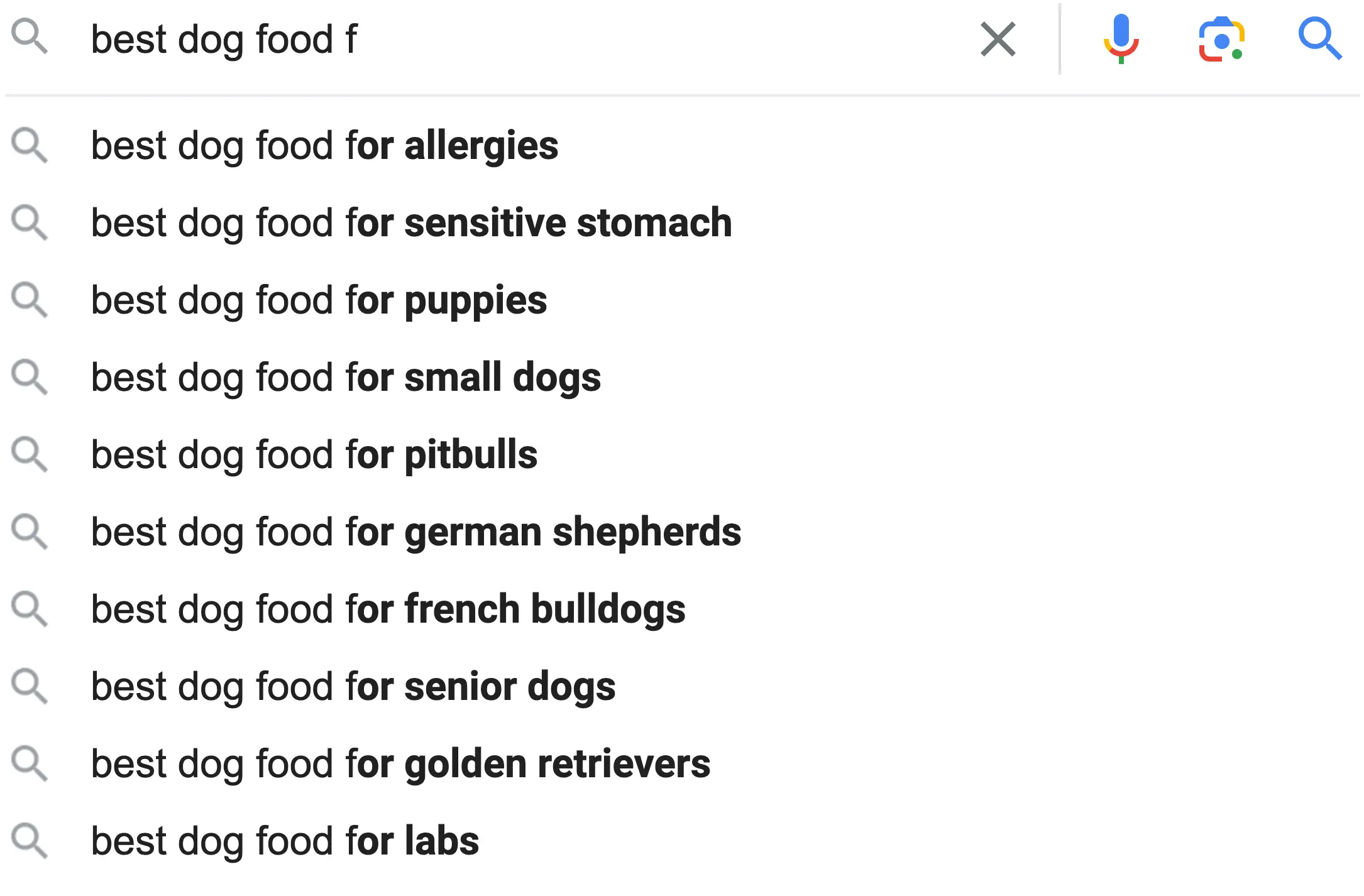
Not all suggestions will be long-tail keywords, even though they might be over 4-5 words. The reason is that Google is showing suggestions based on what other people search, and you might end up with very competitive keyword phrases.
The best way to overcome this is to create a list of possible phrases and check their search volume and keyword difficulty using a keyword research tool.
People Also Ask - Another place to look for long-tail keywords is the 'people also ask' section. These are usually question-based keywords that are great candidates for targeting with content.
Use the dropdowns to analyze a keyword further and get more suggestions.
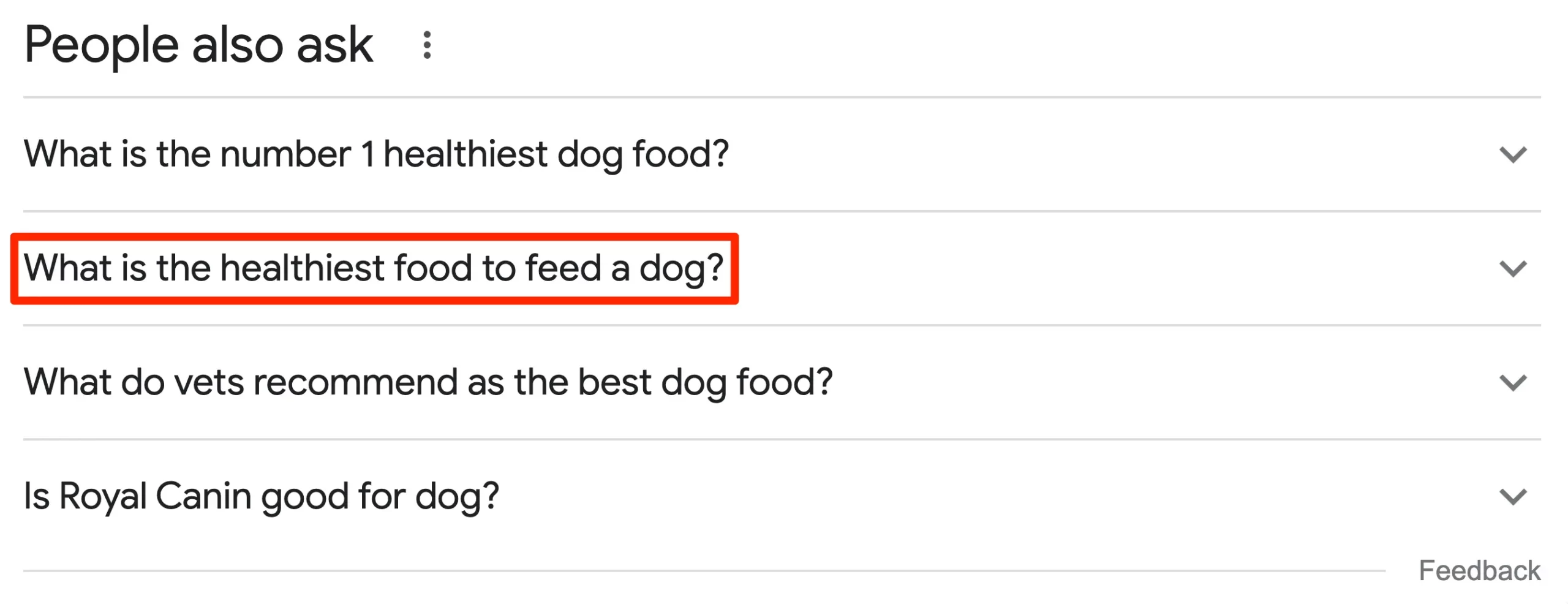
Related searches - Another nice Google search feature is the "Related searches", shown further down the page. Google might show 6-8 searches related to your primary search.
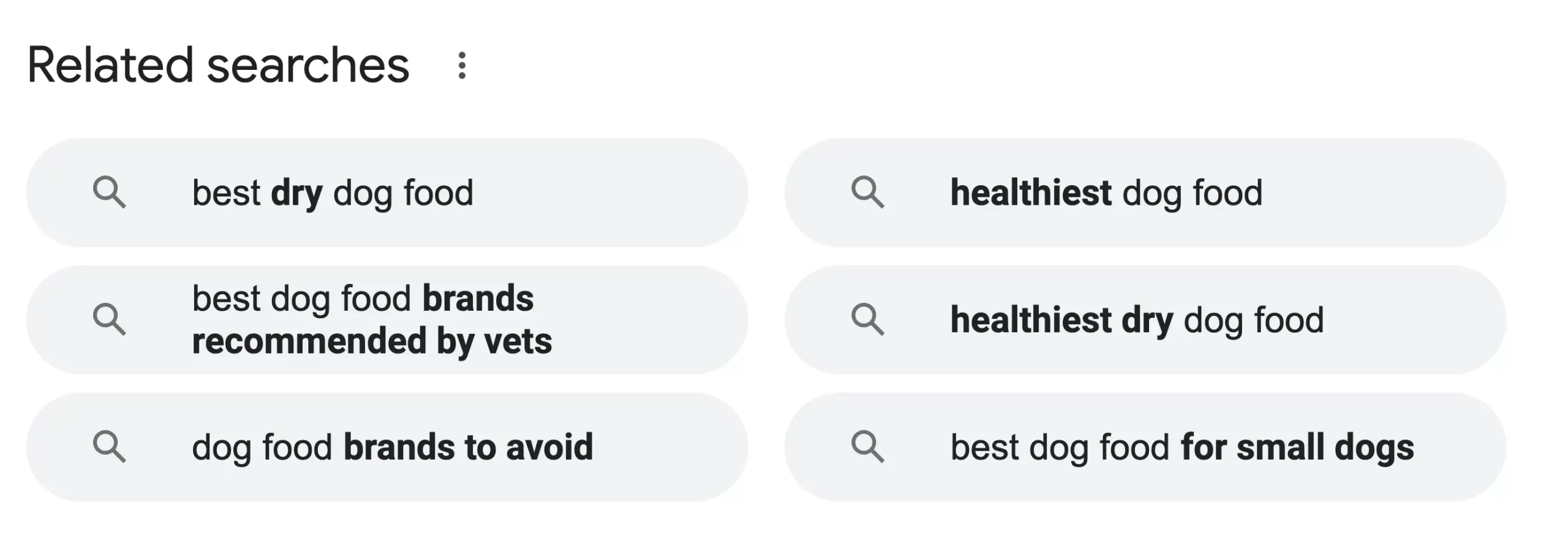
2. Try ChatGPT or Other AI Tools
A faster way to find long-tail keywords is to use ChatGPT or other AI tools (like Google Bard). You can try different prompts to create a list and export them into CSV. You can then import them into a keyword research tool and see which AI suggestions are a good fit.
For example, we've asked ChatGPT to create a list of 10 long-tail keywords for "best dog food" and gave us the following suggestions.
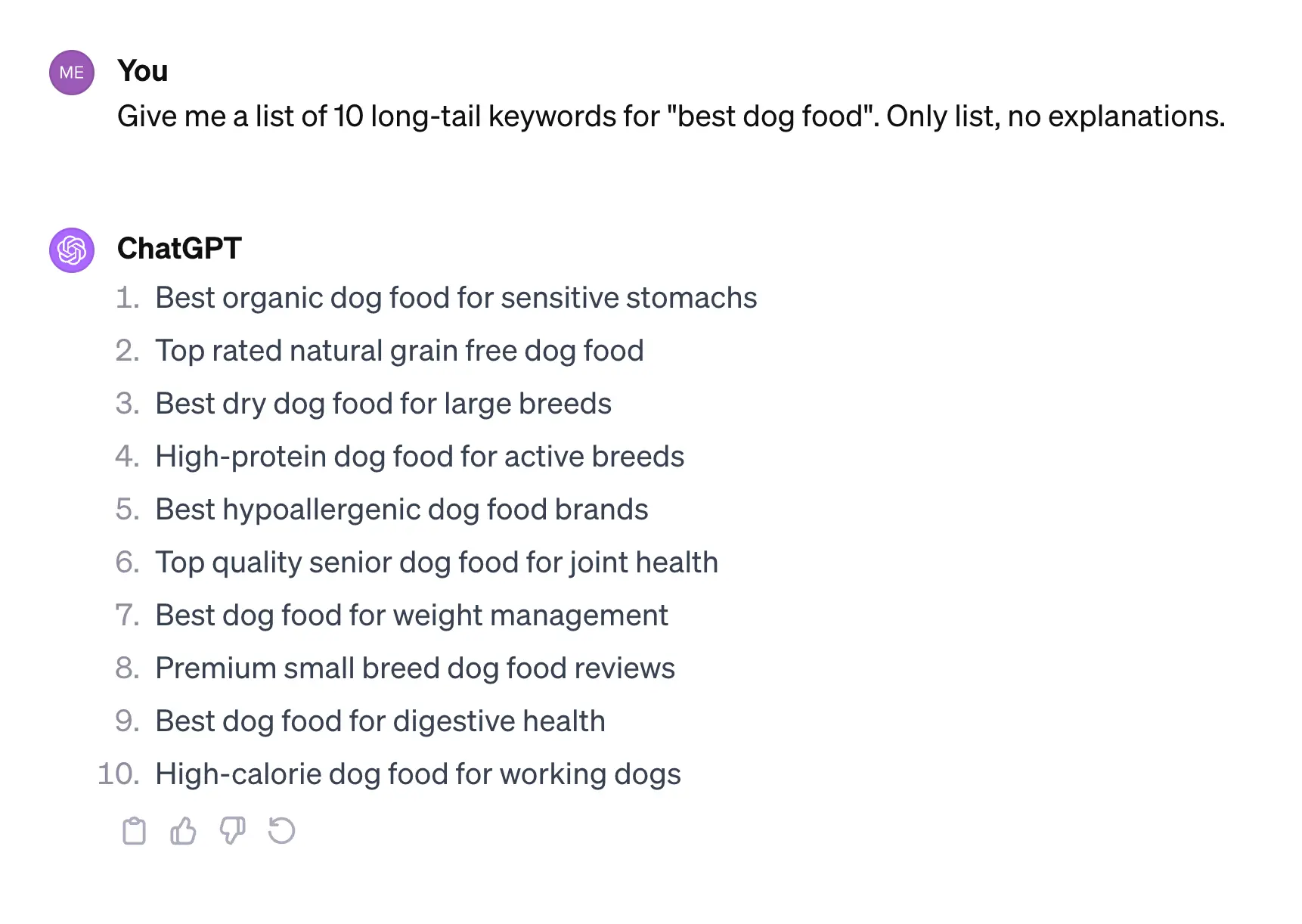
We then analyzed them in Semrush. As you can see below, some have low keyword difficulty and a decent monthly search volume, making them ideal long-tail keywords for our campaign.
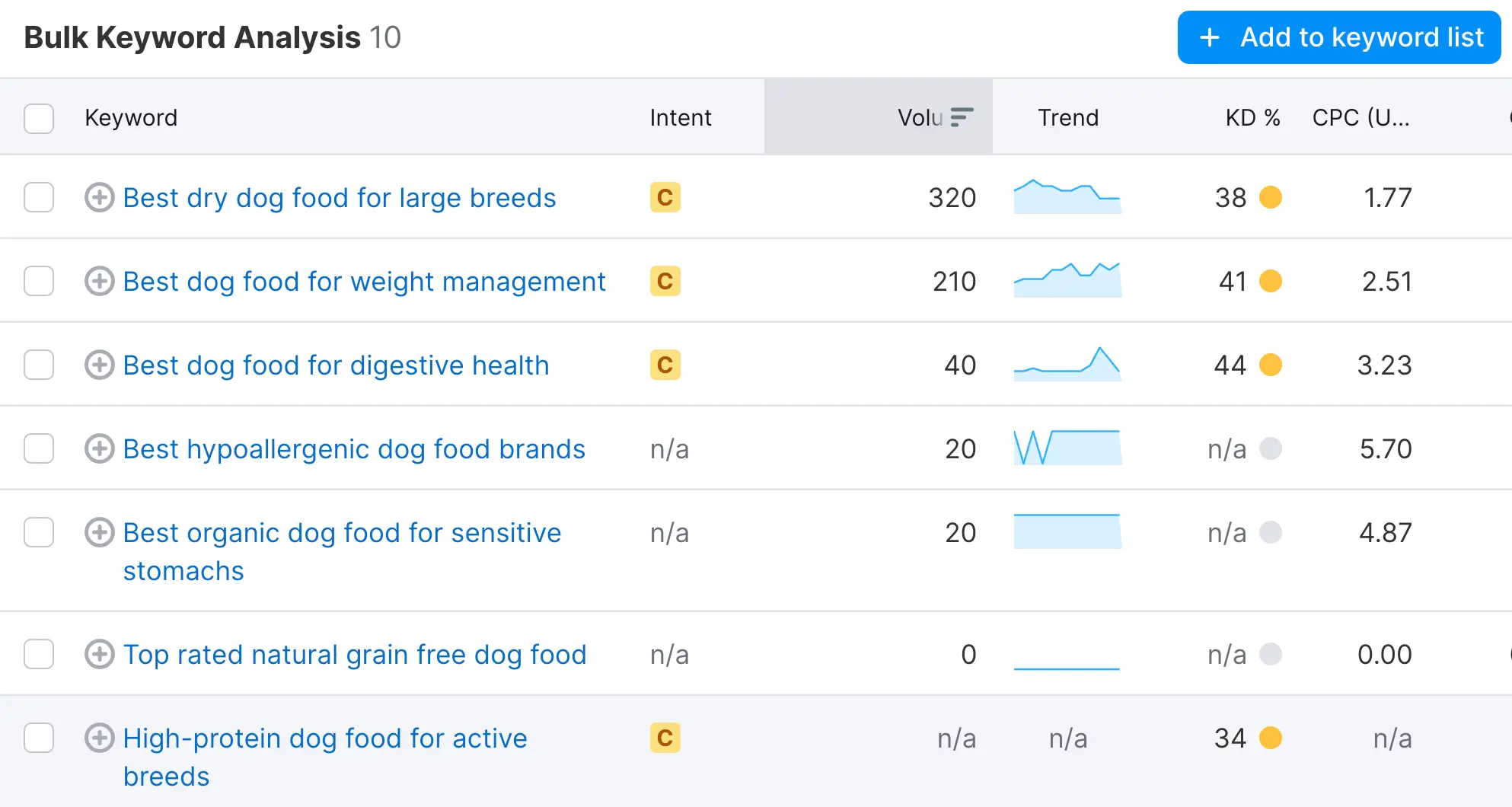
3. Use Keyword Research Tools
One of the easiest ways to identify long-tail keywords is to use a tool like Semrush or Ahrefs.
In the example below, we've used Semrush Keyword Magic Tool to search for "best dog food". We've then selected "Broad Match" and used the "Advanced filters" to show search queries of 4 words or more.
We've also used the Keyword Difficulty (KD) filter to show keywords that have less than 40% KD and are thus easier to rank for.
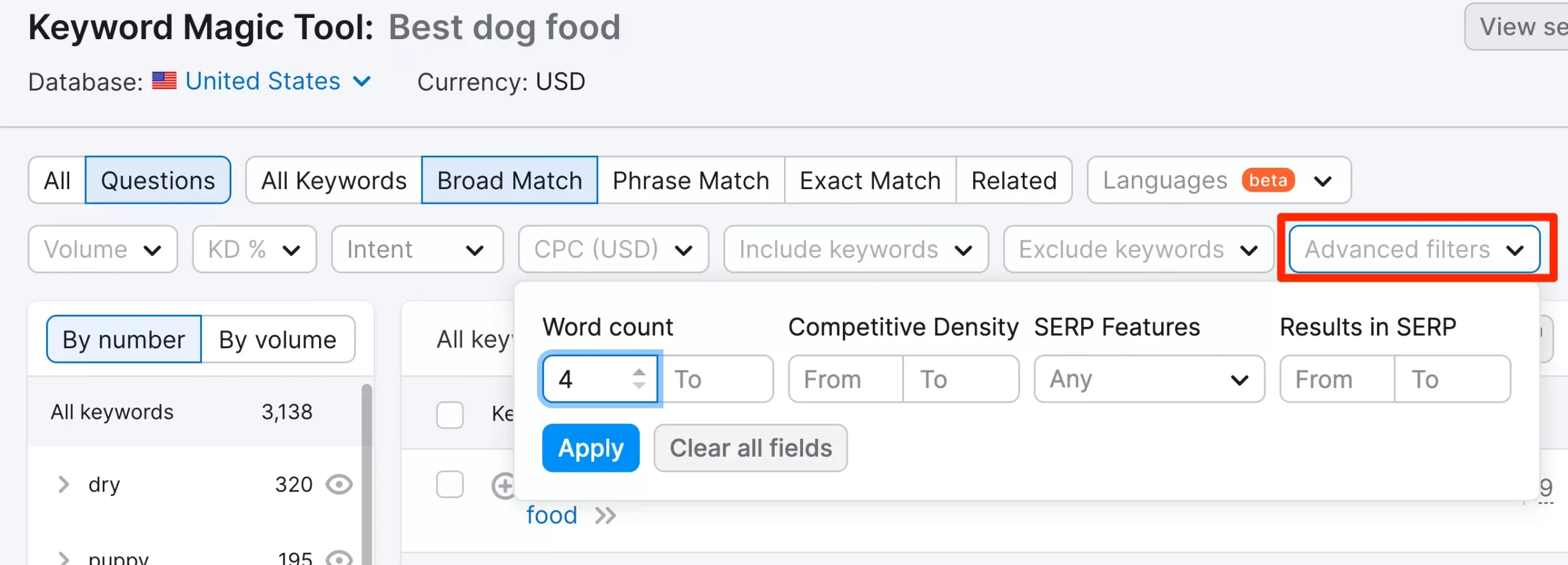
As you can see below, all queries meet all the criteria for long-tail keywords.
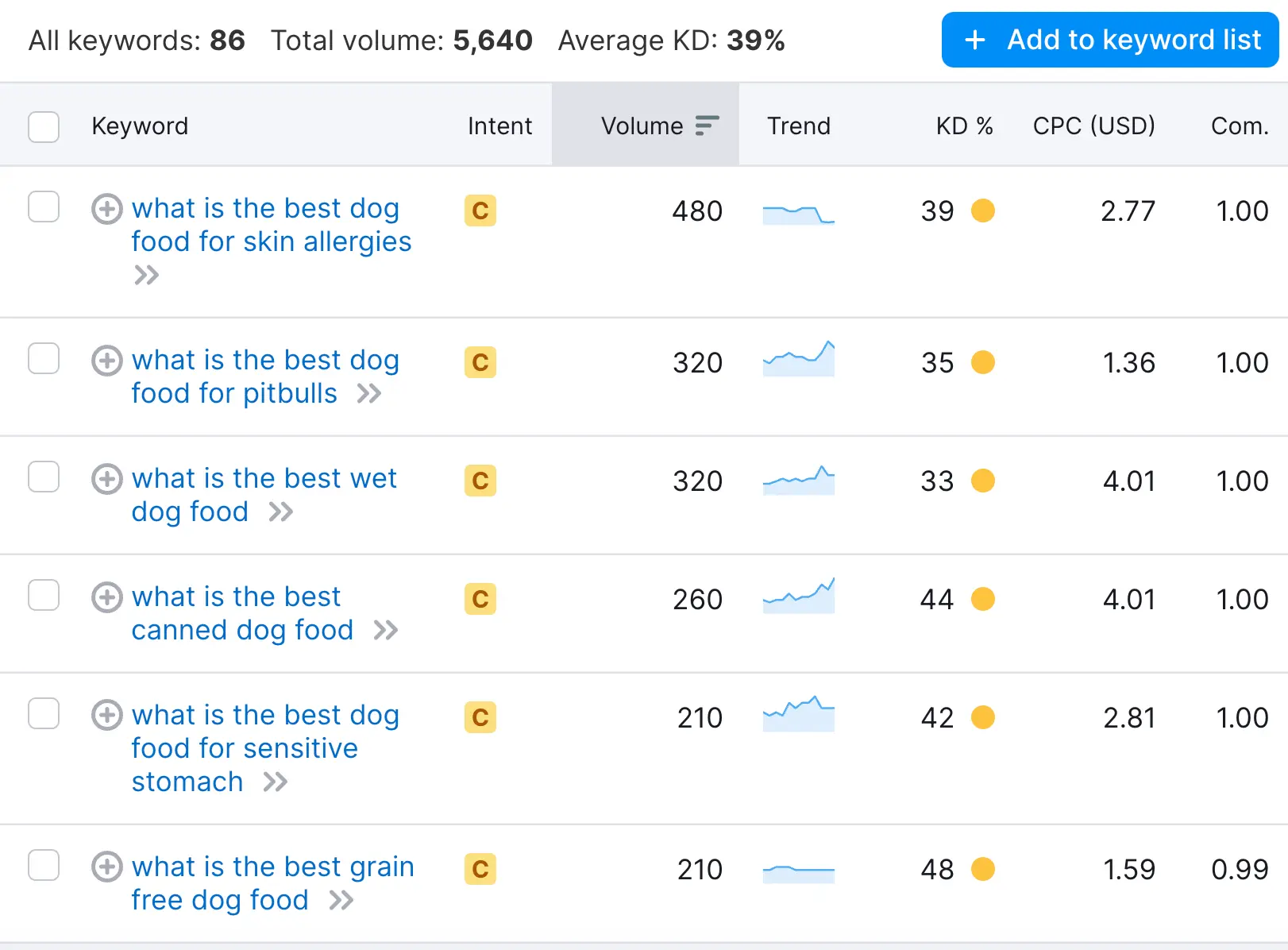
4. Find Your Competitor's Keywords
There is no niche without competition, so finding your competitor's keywords is a good approach to understanding their tactics and strategies.
You can reverse engineer their rankings and find for which long-tail keywords they rank on Google.
The process is straightforward. You enter a competitor's domain in a keyword tool and analyze the keyword rankings. You can use the advanced filters to see which long-form queries they rank for and how much traffic they get.
Once you identify these keywords, compare them to your content. Look for gaps where you could create content that's more detailed, user-focused, or up-to-date. This approach can help you outrank your competitors on specific long-tail queries by offering better or more relevant information.
Remember, it's not just about matching their keywords but about understanding the intent behind the search and addressing it more effectively in your content.
Here is an example of how to identify long-tail keywords by analyzing the domain of a competitor:
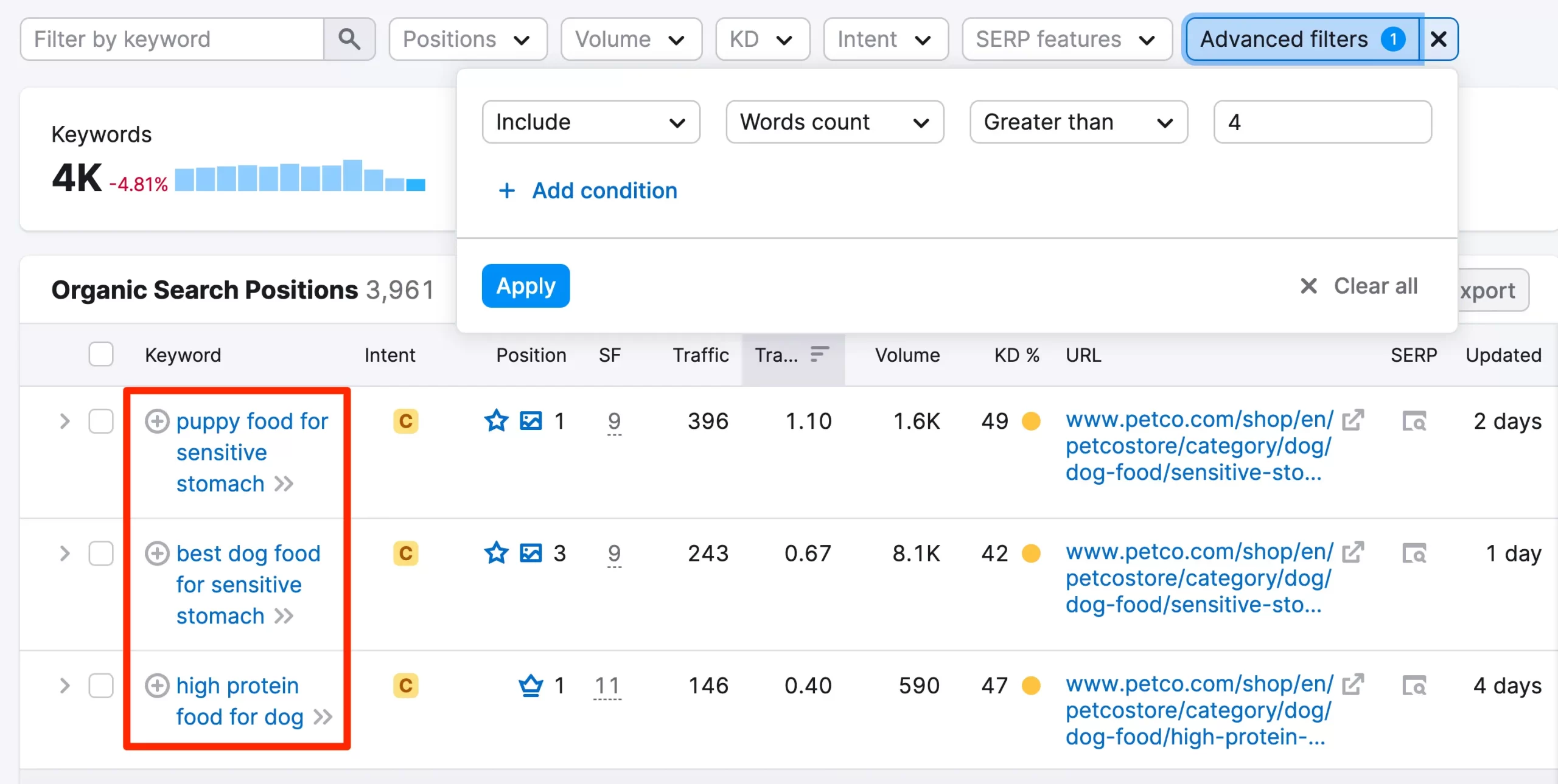
5. Explore Popular Forums
Another way to find question-based queries is by looking at popular forums like Reddit, Quora, or niche-specific forums. When you execute a search on Google, it displays popular questions in the "Discussions and forums" sections.

A nice trick to find popular questions on individual forums is to perform a search using the "forum name target keyword." Look at the example below. It shows the most popular Reddit questions related to dog food.
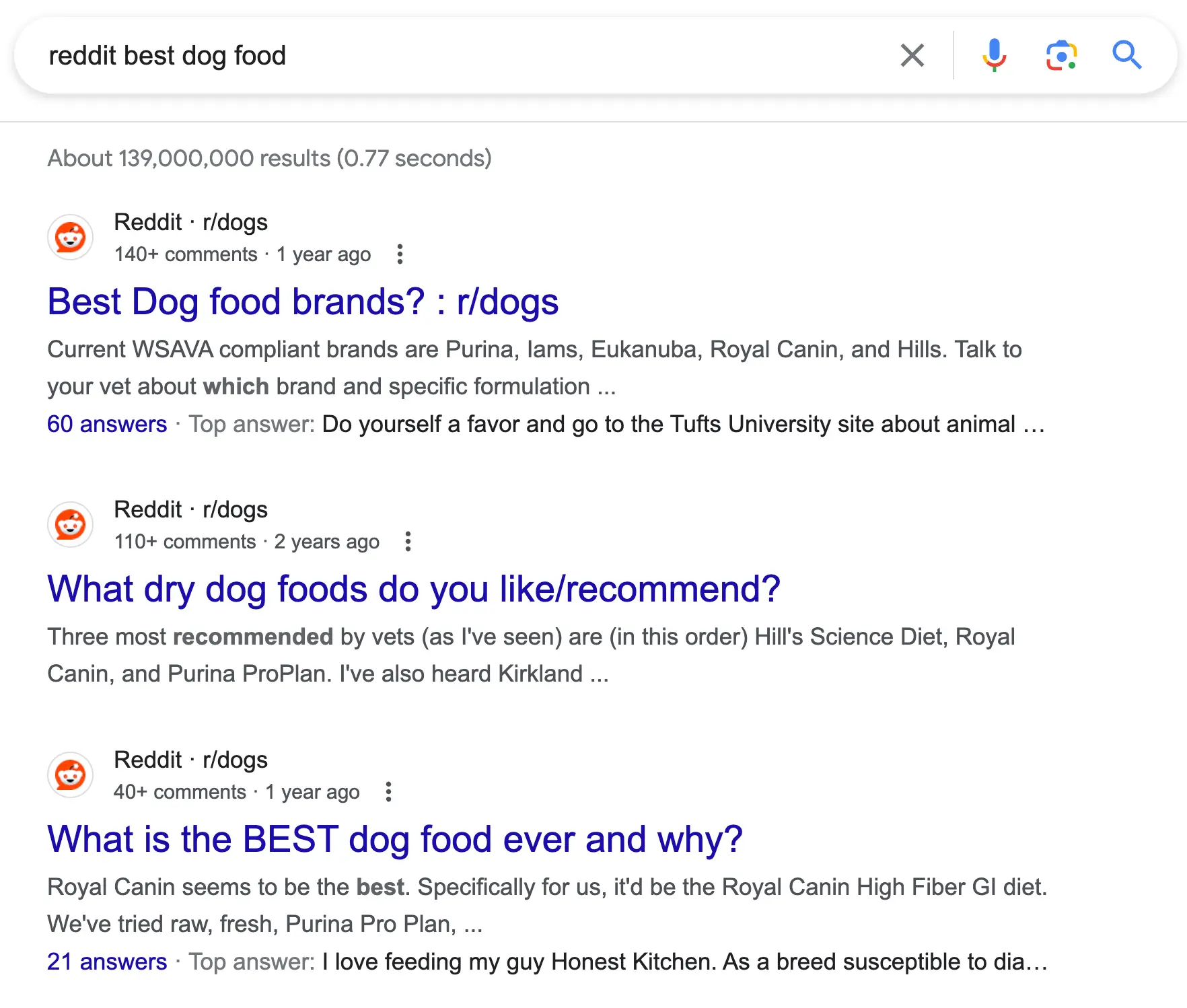
6. Try Google Ads Keyword Planner
Another less popular keyword research method is using the Google Ads keyword planner. The tool is free for Google Ads customers and can give you ideas with average monthly searches.
Google Ads Keyword Planner
How to Use Long Tail Keywords
Once you've identified a list of long-tail keywords to use in your SEO campaigns, the next step is to incorporate them into your content strategically.
Target Long-Tail Keywords With New Content - Create content targeting each long-tail keyword. Ensure the content aligns with the search intent and addresses your audience's queries.
For instance, if you have a long-tail keyword like "best organic dog food for allergies," create content that uses this keyword and provides in-depth insights about organic dog food options, allergy considerations, and nutritional advice.
Group Related Content Into Topic Clusters - After creating content for each long-tail keyword, you can organize these pieces into topic clusters. Clustering helps establish authority on the subject, allows you to rank for head keywords, and enhances the user experience by providing comprehensive information in an organized way.
For example, let's say you've identified several long-tail keywords related to SEO. You can create individual pages targeting each long-tail keyword like "Top Benefits of SEO," "How Does SEO Work," and "SEO Tips For Beginners."
Then, you can create a pillar page titled "SEO Guide" to provide an overview of SEO and link to the cluster pages. Here is a visual representation of how to structure your topic cluster.
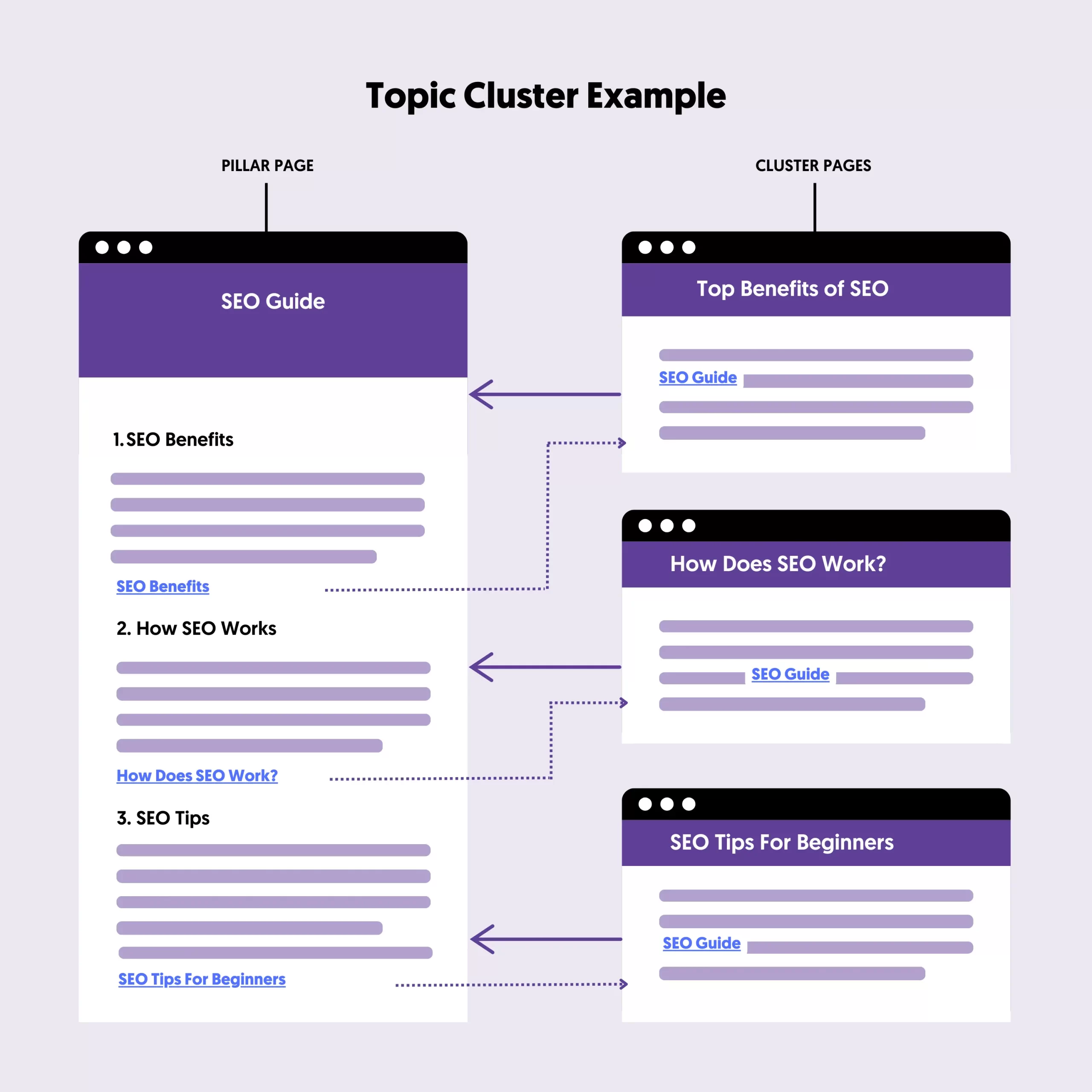
Use Keywords In Your Content - Another essential strategy is to use these keywords in key areas of your content:
- Put the keyword at the start of the headline (and title tag!)
- Use the keyword in the URL.
- Make sure your title is in an H1 tag
- Use the keyword throughout your H2 subheadings
- Use the keyword in the first 100 words
- Use a few variations of the keyword throughout the body of the article.
Getting Started With Your Long Tail SEO Strategy
What's the next step you can act on right now?
Pick a head keyword, find the low-hanging long-tail fruit, and get targeting with content or ads that recognize the intent behind the search term.
There is no way to get traffic and good rankings for new or not-so-big websites than working with long-tail keywords. The competition for high-volume keywords is vast, and winning one of the top positions isn't easy.
The best way to start building a solid website is to consistently provide top-quality content for long-tail keywords to gain rankings and traffic and then gradually move on to more general terms and establish your presence.

